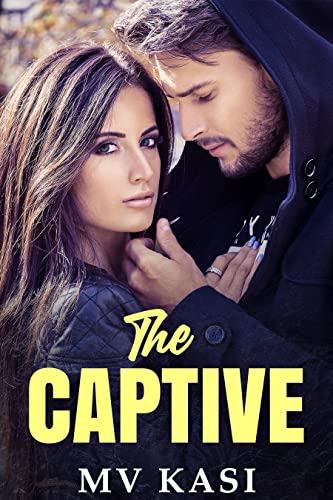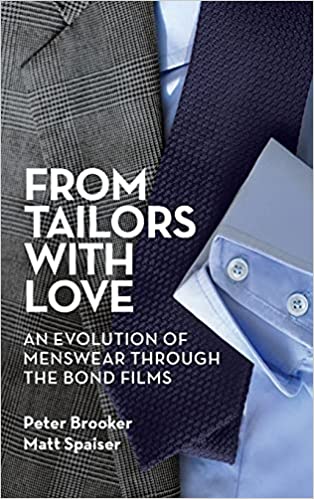Selling books on social media is about being yourself
Not everyone has time, energy or interest in maintaining a social media presence for themselves, much less a separate one for their pen name (if the two happen to be different). And while there are plenty of paths to success, one of the most common shared elements I’ve noticed between successful authors that I’ve worked with is that they not only pay attention to social media, but they do it right. That means being personal and personable in your posts, instead of just using the medium as an afterthought or only when you have a new book to sell. That approach may work for businesses, but authors are selling stories that are often a part of themselves, which means your social media has to reflect that by creating a more personal connection with your readers. It sounds daunting, but as Ginger describes below, there are ways to make it easier.
One of the biggest advantages you gain in selling more copies of your books is marketing them using the power of YOU.
In general, there are two types of self-published authors – and I’d know, since I’ve been both.
There are those who write the books they want to write, publish them under their own name, and exist openly and publicly with the identity of author or writer. This was how I started out – writing adventure stories and publishing them using my real name.
Then, there are self-published authors who write under a penname – perhaps because they don’t want their pastor or dentist finding out that they wrote steamy romance novels or blood-dripping horror stories in their spare time! This was the case when I started publishing dark, gritty, and sexually-explicit romance novels.
There are practical reasons for going either route. If you want to be known as a writer, it makes sense to pursue the first option – although often the problem you might encounter is that the books you want to write, combined with the fact that they’re the kind of books you don’t mind your pastor reading, often take a while to build up momentum and aren’t often best-sellers out of the gate.
Likewise, it’s much easier to sell steamy romance or horrific horror stories since they have the juicy elements readers crave; but there’s a definite disconnect between an author and their readers if you’re using a fictional penname as the middle man.
Now, obviously, if the whole business with your dentist or pastor isn’t something you’re prepared to budge on, your hands are tied – but I’ve been pondering these last few weeks how one of the most powerful tools a self-published author has in their arsenal isn’t actually an advertising hack or a promotional gimmick – it’s themselves.
I was thinking about the three last books I bought, and why I bought them, and a pattern very quickly emerged. Here are the books:

The Final Flight by James Blatch
I’m a huge fan of World War II and Cold War aviation thrillers from authors like Len Deighton, Derek Robinson, and the biographies of Roald Dahl – so when I saw the cover of this Cold War-era conspiracy thriller, my interest was most definitely piqued.
However, the fact that it was the debut novel by James Blatch – who most writers know through his affiliation with Mark Dawson’s Self-Publishing Formula – tipped me over the edge.
I’d interacted very briefly with James on a number of occasions, so felt especially invested in this book; and I’m pleased to say that faith wasn’t misplaced. It’s one of the best debut novels I’ve ever read, and a totally immersive adventure just like the ones I’d read growing up.

The Captive by M.V. Kasi
As a romance author, one of the most important parts of my job is reading the work of other romance authors to see what trends are popular, what hooks and beats are in season, and also just to remain passionate about the genre. This is why I try to read at least one romance novel a month.
After spending some time in India last year, I became fascinated by the emerging superstars of the Indian self-publishing scene and when I stumbled across and interacted with author M.V. Kasi’s Instagram account last year, decided to break the seal on exploring Indian romance novels with her dark romance about a beautiful wife kidnapped by a dark, mysterious stranger.
Again, it didn’t disappoint – and, again, it was knowing a little about the author that triggered my decision to choose this book.

From Tailor’s with Love by Peter Brooker and Matt Spaiser
This 2021 release is a non-fiction book dedicated to the style and fashion of James Bond through his 25-film movie career, which is why it immediately caught my interest when I learned about it (yeah, yeah, I’ll stop going on about James Bond eventually, I promise.)
However, what made this book stand out among dozens of books about 007 published every year is the fact that I knew both of the authors through their Instagram accounts and I’d actually met Matt Spaiser before, albeit briefly.
Again, that interaction with the authors is what tipped me over the edge into clicking ‘Buy Now’ instantly.
In all three examples, the thing that turned me from a potential customer into a paying reader was the fact that I’d had some sort of interaction with the authors – either personally, or on social media. It didn’t mean I necessarily ‘knew’ them (although I’d say I’ve become friends with Peter and Matt since) but that familiarity was what triggered me to buy a book I might otherwise not have done.
Now, obviously, I don’t only buy books by authors I’ve interacted with – but it’s certainly something I’ve noticed makes a big difference and accelerates my buying decision; and I imagine if you think about the last few books you’ve purchased, you might feel the same way.
So, how can this help ME?
Once you’ve realized that having some kind of personal connection with a potential reader is a GREAT way to get them to click “buy now” faster, you have to go ahead and create one.
How, you might ask? Well, simply by being yourself.
I know, I know. That’s the worst and vaguest advice you’ve ever heard. It was the advice they used to give me at school when I was trying to get a girl to like me. What does “being yourself” even mean?
Well, it means just that – being yourself. Or, more rather, being the person who wrote the book you’re trying to market; which is probably as close to the “real” you as you’re ever going to get.
The beauty of writing is that it allows you to express so many of the things we can’t on a regular basis. Our pain, our passion, and our purpose are translated into characters, words, and images – and the more authentically we write, the more those words will find an audience who resonate with them.
I’m a posh little boy from the south of England, so it might seem absurd for me to write novels about towering, tattooed bikers – but the themes of comradeship, sacrifice, and love have led me to receive emails from readers from all over the world who’ve told me: “I really felt that bit.”
When I send out my newsletters, or post on my social media channels, I try to remember that; and try to present myself as the person that reader connected with. It’s not difficult. In fact, it’s often a lot easier than trying to pretend to be the person I think my social media followers want me to be.
In practical terms, it means I’ve turned my personal social media channels into channels to promote my books – but I do so by simply posting the things I would have done anyway. I’ve created a business account for my Instagram connected to a Facebook Page about my books (separate from my personal Facebook account, obviously) but I just use them as I would my regular Facebook account. I post pictures of my kids, and of the cocktails I make, and the old cars I tinker with, and the even older books I like to collect.
Unintentionally, these are all themes that are present in my books; so by simply being myself I’m actually marketing what my writing stands for better than I could ever have done deliberately trying to “sell” my books. I’ll find regular readers liking and commenting on my posts, and when I post book-related content, they’ll often share and like and be some of my biggest advocates on the Internet.
The not-so-secret element that has to be there, of course, is a way for your social media followers to easily and effortlessly find and buy your books. That’s why I’ll have a link in my bio, and be sure to slightly-more-cynically schedule at least one post a week highlighting one or more of my books. It’s a subtle balance between being yourself and being an author – but if you get that balance right, then every time you post a picture on Instagram, you’re also marketing your books in the most organic and seamless way possible.
Making social media easy
The second advantage to using yourself to market your books is that it overcomes the biggest hurdle authors often face in leveraging social media – figuring out what to post!
If you post what you were going to post anyway, then coming up with content to sell your books becomes a seamless and natural part of your day-to-day. Whether it’s my kids acting goofy, or a selfie to celebrate my new haircut, or a picture of a cool old Chrysler I saw while walking the dog, that content helps reach new potential followers and gives the existing ones more evidence that we both share the same values and aesthetics.
It’s also worth focusing on the social media platforms that work best for you, instead of trying to force it. I’m all about YouTube and Instagram, so I don’t really bother with Twitter or TikTok. However, other author friends adore Twitter and find it easier to post there. In any event, every social media channel has an audience, so if you can find the channel that works best for you, it’s the best way to connect with them. I’d argue that getting one channel right (for me, it’s Instagram) is worth far more than forcing yourself to post on channels that don’t really vibe with you.
The value of creating a connection with a potential reader is authenticity – so choose what channels feel like authentic platforms to express yourself on and you’ll make the best of it.
But I don’t WANT to be myself!
Okay, so this is all well and good for those of us who don’t write steamy romance or gruesome horror (or don’t care whether or not our pastor knows about it.) However, if you don’t want anonymous readers to see pictures of your kids or your haircut, you can still find some value in this advice.
When I post on the Instagram account of my penname, I try to follow the same philosophy as I do when I post under my real name: I post things that I authentically enjoy and interest me. As the author of MC romance, for example, it makes sense to indulge my love of old Harley Davidsons by snapping a picture of every one of them I see “in the wild.”
Likewise, my hard-drinking motorcycle club enjoy whiskey and craft beer – and so do I! So if I’m out sipping bourbon with friends at a pub, I’ll make sure to snap a picture of the bottle so the readers who follow my penname’s account can see that I’m an authentic appreciator of the small-batch bourbons my bikers like to drink.
As I wrote about in this blog post – I’ve set myself some “rules” about what and when to post and that helps keep me creating content while still separating my real-life identity from my steamy penname. More so than that, it’s content that’s authentic and represents the vibe and aesthetic of my books. This philosophy makes it a much more rewarding experience for readers to follow you on social media because your personality still shines through and it’s not just post after post of you trying to sell your books. Also, it makes it a lot easier for me to post stuff on my penname’s accounts because I’ve already got an idea of what to post!
Back when I used to run social media accounts in corporate America, I used to describe the process as “a sausage factory” because you were constantly creating content and feeding it into an ever-hungry machine. By embracing authenticity and the brand of “you” it not only automates a lot of the process; but the content you do generate ends up being a lot more effective because it’s so much more authentic.
Good luck!











